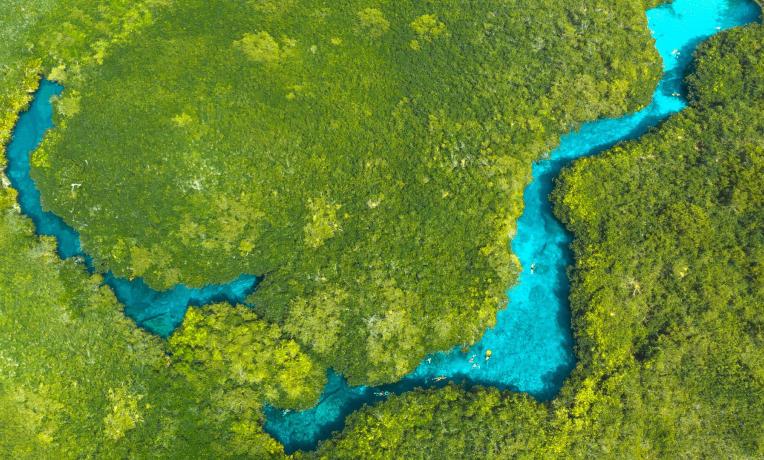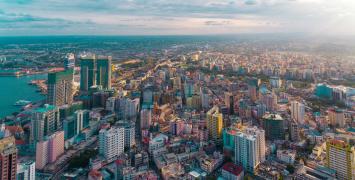Will we run out of groundwater?

By Ruth Domínguez Anguera
The Earth holds approximately 20 million cubic kilometres of groundwater, roughly equal to the amount of saline water below the surface. But not all of it is usable: some lies too deep to extract, while other portions are already being tapped faster than they can recharge.
Over the past decade, groundwater use has increased sharply. ‘It all comes down to population growth,’ Marc Bierkens says. ‘As countries become wealthier, people consume more food and water. When rivers and lakes start to run dry, groundwater becomes the only source.’
Certain regions, however, are depleting their aquifers (natural underground water reservoirs) faster than nature can refill them. These ‘hotspots’ are often agricultural heartlands, such as California's Central Valley, the High Plains Aquifer in the Midwestern United States, the Mississippi Embayment and parts of Mexico, Iran, northern India, Pakistan, north-eastern China, and south-eastern Spain.
‘There's so much sunlight in these areas that plants grow fast, but they still need groundwater. Excessive pumping is steadily draining these reserves,’ he notes.
Tragedy of the commons
According to Bierkens there are two main reasons why we have come to overexploit groundwater. The first reflects the ‘tragedy of the commons’, which is the idea that when many people have free access to a shared, finite resource, they tend to overuse it, ultimately destroying its value. ‘If you have a resource that benefits you, you make use of it. Initially, it generates a lot of profit, but then more people arrive and draw from the same resource, until it becomes overused and starts to deteriorate,’ he explains.
On the other hand, when access to water is restricted to certain individuals, such as landowners, the ideal pumping rate for maximum profit might exceed the aquifer's supply capacity. For example, if an aquifer can naturally replenish 100 mm of water per year, but landowners wish to pump 120 mm to increase their profits, this would surpass the aquifer's natural replenishment rate, causing it to run dry.
The first global groundwater model
To determine recharge and river levels, Bierkens and his team developed a model based on the physical laws of groundwater flow. Funded by the ERC, this became the world's first high-resolution global groundwater model. Up until now, Bierkens’ team has completed several simulations, focusing on climate scenarios up to the year 2100.
‘Information on groundwater is limited. If you want to know the depth of the groundwater at a specific location, you could stick a tube in the ground to measure it,’ Bierkens says. However, there are only a few thousand of these available globally, and even if they were all combined, they would likely only cover an area as large as the centre circle of a football field, he explains.
The team now has an operational model covering one-by-one-kilometre areas. This makes it possible to estimate groundwater levels and make predictions. ‘Of course, it's not perfectly accurate, but it's better than having no information. If you want to predict the future while taking climate change and population growth into account, you need a model.’
Effects of depletion
Groundwater depletion will affect not only local areas but also regional and global crop and food prices.
At a local level, the depletion of large aquifers in semi-arid regions can trigger economic decline, changes in land use, land abandonment, and significant social impacts on nearby communities, Bierkens notes. Globally, because these regions are major food producers that depends heavily on groundwater, losing access to this resource would reduce the food supply and lead to higher prices worldwide.
According to Bierkens, the over-pumping of groundwater is already affecting three types of ecosystems: small rivers, wetlands, and phreatophyte trees.
Rivers and lakes continue to flow during dry seasons because they are fed by groundwater. When too much groundwater is pumped out, less water reaches these streams, causing them to dry up, with low water levels putting fish and other aquatic life at risk.
Many of the world's wetlands also depend on groundwater to remain water-logged throughout the year. If the water table drops, these ecosystems can dry out, either temporarily or permanently.
Finally, there are the so-called phreatophyte trees. These trees have roots that can reach depths of 30 to 40 metres to access groundwater resources. But they depend on the groundwater remaining within reach. If it drops too deep, the trees will die.
Sustainable balance
Bierkens points out that much of the current decline simply stems from a lack of knowledge of how much groundwater can be safely extracted. ‘If people understood the limits, defined as the optimal pumping rate, they would take as much as they could, but not so much that it causes harm’, he explains.
In some regions, the economic optimum exceeds the physically permissible pumping rates. In these cases, ‘the government must step in and take measures,' he adds.
Groundwater regulation should address both demand and supply. On the demand side, farmers can conserve water by growing crops that need less water (such as grapes or wheat), adopting more efficient irrigation systems, or using smart irrigation practices that match water to soil and crop needs. Pricing or taxing water could further encourage responsible use.
On the supply side, increasing water availability can be achieved through managed aquifer recharge, where rainwater is collected to replenish underground reserve. Another option is renewable-powered desalination in coastal areas.
‘By combining demand reduction with supply strategies, we can create a sustainable balance and protect groundwater,’ he emphasises.
Attainable groundwater
And finally, the big question: Will we run out of groundwater?
’I can't give you definitive figures yet. We're working to try to answer that question, but I can give you a little bit of a ballpark’, he says. ‘It will not run out everywhere at the same time. In fact, it will never completely run out because there is so much of it. However, when we talk about attainable groundwater, which refers to the amount of groundwater that can be sustainably and practically extracted from an aquifer, either physically or economically, that amount can run out.’
‘When we talk about economic depletion, meaning water exists but it’s too expensive to extract, this has already happened in certain parts of the US, as evidenced by dry wells. When discussing physical depletion, the challenges vary depending on the region and type of groundwater use. This results in four very different scenarios.’
In regions where low-value crops such as wheat and corn are cultivated, groundwater extraction is restricted to the upper aquifers which will then be depleted quite fast, especially if these aquifers consist of low-porosity deposits that retain little water.
By contrast, in areas with high-value crops such as almonds, soybeans, and citrus fruits, farmers can afford to extract groundwater from deep, often porous, aquifers so depletion occurs much more slowly, sometimes taking centuries.
Coastal regions face a different problem, as groundwater is becoming saline due to seawater intrusion and groundwater pumping, bringing them close to their physical limits. To counter this, freshwater is sometimes injected to push seawater back.
Finally, in places with seasonally recharged aquifers, such as central and southern India, groundwater is heavily used during the dry season. Fortunately, they are replenished each monsoon, meaning their physical limits are regularly reached and then reset.
Groundwater paradox
While conducting this research, Marc Bierkens and his team found a surprising contradiction.
While wetlands are in decline and local pumping continues to deplete aquifers in certain hotspots, the overall groundwater storage is actually increasing. This phenomenon occurs because in many regions climate change brings more precipitation, which boosts recharge and raises groundwater levels, highlighting the complex and sometimes contradictory ways our water systems respond to environmental change.
Biography
Marc Bierkens holds the chair in Hydrology at the Department of Physical Geography at Utrecht University. His research focuses on understanding the global water cycle and how this is impacted by climate change and human water use. To support this work, his group uses high-resolution global water models. The results of these models are frequently used in public outreach (e.g. the National Geographic World Water Map) and to support web application to aid NGOs and companies in water risk assessments (e.g. the World Resources Institute Aqueduct Water Risk Atlas). Marc Bierkens is a fellow of the American Geophysical Union and a member of the Royal Netherlands Academy of Arts and Sciences.






